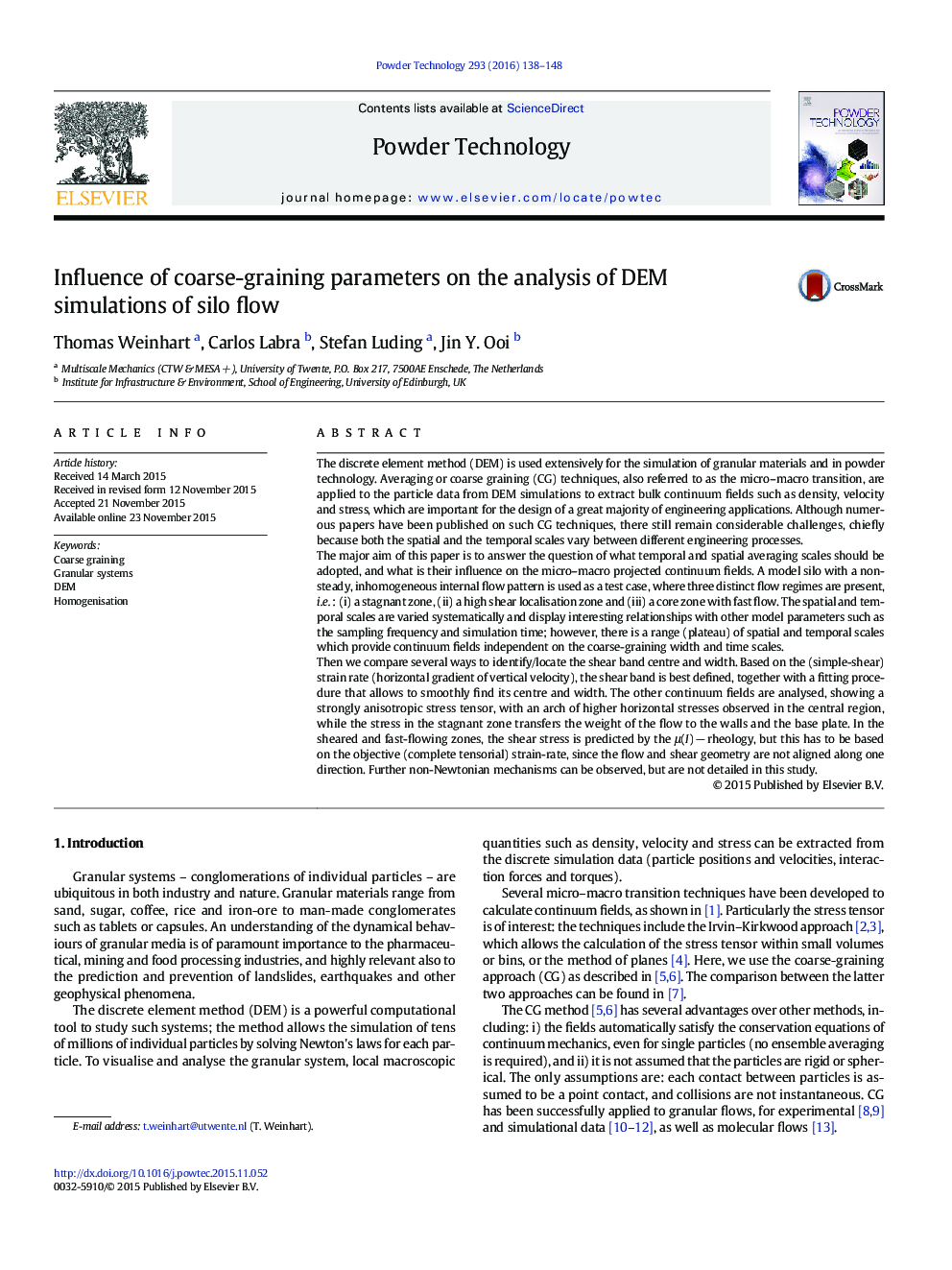| کد مقاله | کد نشریه | سال انتشار | مقاله انگلیسی | نسخه تمام متن |
|---|---|---|---|---|
| 234955 | 465621 | 2016 | 11 صفحه PDF | دانلود رایگان |

• Coarse graining is a homogenisation method that exactly satisfies momentum balance.
• We study the influence of the coarse-graining parameters on DEM simulation results.
• We find optimal time/length scales where fluctuations/smoothing effects are minimal.
• A silo flow model with internal flow pattern is used as a test case.
• The test case includes stagnant regions, high shear localization and fast core flow.
The discrete element method (DEM) is used extensively for the simulation of granular materials and in powder technology. Averaging or coarse graining (CG) techniques, also referred to as the micro–macro transition, are applied to the particle data from DEM simulations to extract bulk continuum fields such as density, velocity and stress, which are important for the design of a great majority of engineering applications. Although numerous papers have been published on such CG techniques, there still remain considerable challenges, chiefly because both the spatial and the temporal scales vary between different engineering processes.The major aim of this paper is to answer the question of what temporal and spatial averaging scales should be adopted, and what is their influence on the micro–macro projected continuum fields. A model silo with a non-steady, inhomogeneous internal flow pattern is used as a test case, where three distinct flow regimes are present, i.e. : (i) a stagnant zone, (ii) a high shear localisation zone and (iii) a core zone with fast flow. The spatial and temporal scales are varied systematically and display interesting relationships with other model parameters such as the sampling frequency and simulation time; however, there is a range (plateau) of spatial and temporal scales which provide continuum fields independent on the coarse-graining width and time scales.Then we compare several ways to identify/locate the shear band centre and width. Based on the (simple-shear) strain rate (horizontal gradient of vertical velocity), the shear band is best defined, together with a fitting procedure that allows to smoothly find its centre and width. The other continuum fields are analysed, showing a strongly anisotropic stress tensor, with an arch of higher horizontal stresses observed in the central region, while the stress in the stagnant zone transfers the weight of the flow to the walls and the base plate. In the sheared and fast-flowing zones, the shear stress is predicted by the μ(I) − rheology, but this has to be based on the objective (complete tensorial) strain-rate, since the flow and shear geometry are not aligned along one direction. Further non-Newtonian mechanisms can be observed, but are not detailed in this study.
Figure optionsDownload as PowerPoint slide
Journal: Powder Technology - Volume 293, May 2016, Pages 138–148